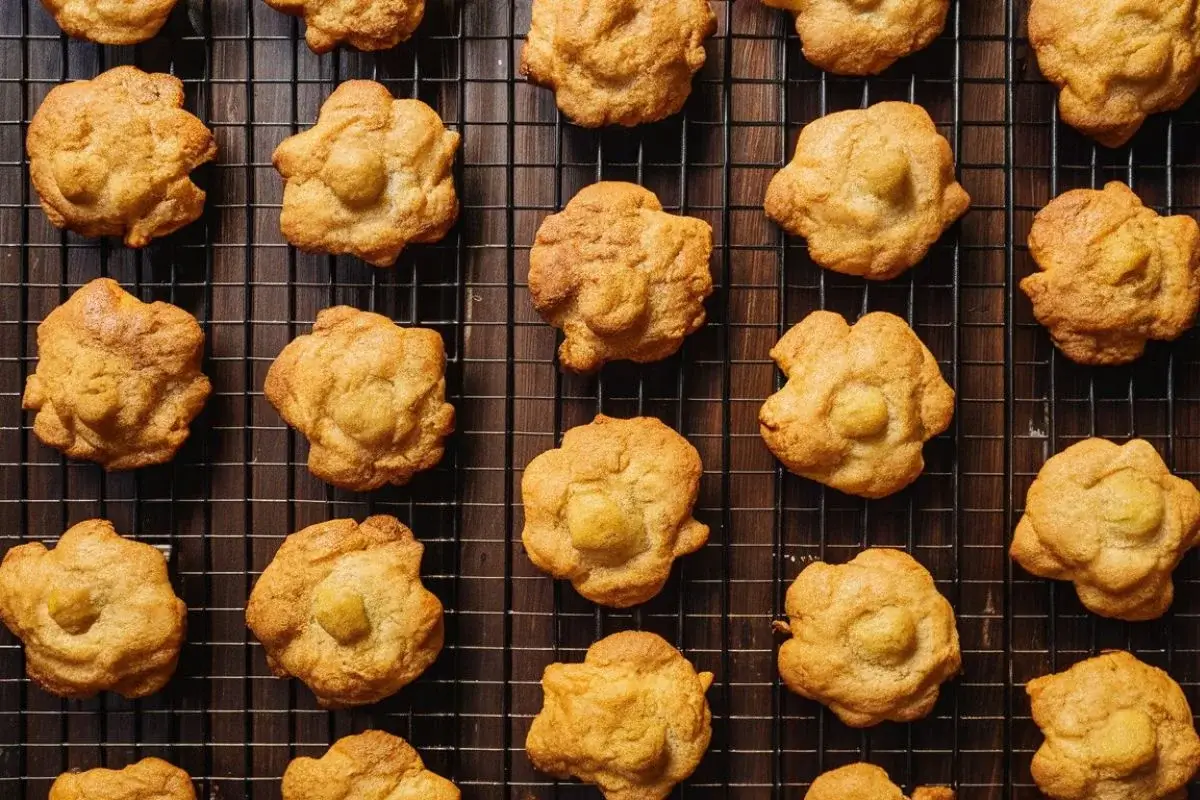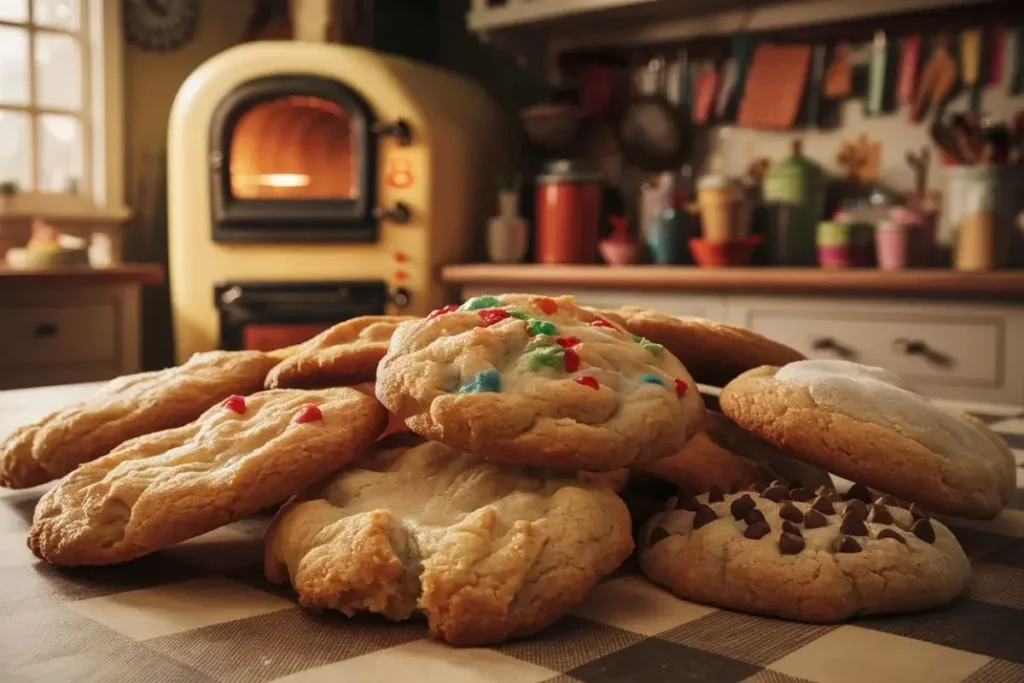Welcome to our deep dive into the fascinating world of baking, specifically focusing on one of the most seemingly simple yet crucial aspects: how long should cookies cool. This comprehensive guide isn’t just about waiting for your treats to chill; it’s a journey through the why’s and how’s, ensuring that every batch you bake turns out impeccable. Whether you’re a novice baker or a seasoned pro, understanding the cooling process can dramatically improve the quality of your cookies. Let’s get ready to explore effective cooling techniques, common pitfalls, and pro tips to elevate your baking game!
Why Cooling Cookies Properly Matters
Baking cookies is an art and a science, combining flavors, textures, and timings to create something truly delightful. However, many bakers overlook a critical step after the oven: the cooling period. Why is this phase so important? Well, without proper cooling, cookies can end up too soft, too hard, or simply crumble apart.
Factors Affecting Cooling Times
First off, let’s talk about the type of cookie and ingredients. Chewy cookies like chocolate chip or oatmeal may seem done when you pull them out of the oven, but they actually continue to cook on the baking sheet. If they aren’t given enough time to cool, they might not set properly, leaving you with a gooey mess. On the other hand, delicate cookies such as tuiles or lace cookies need a keen eye to cool just enough to retain their crispness without becoming too brittle.
Moving on to cookie size and thickness, it’s clear that size does matter. Larger, thicker cookies like those decadent double chocolate cookies require a longer cooling time than their thinner, snappier counterparts such as sugar cookies. This difference in cooling time isn’t just about size; it’s about ensuring the texture is just right—firm yet tender, not too chewy nor too crisp.
Cooling cookies isn’t just about patience; it’s about technique. Whether you’re cooling on a wire rack or directly on the baking sheet, each method affects your cookies’ texture. For instance, cooling on a wire rack is generally preferred because it allows air to circulate around the cookies, cooling them evenly and preventing sogginess. Alternatively, leaving cookies to cool on the baking sheet can lead to continued cooking from residual heat, which might be perfect for some cookies that need a bit more time to set up.
In short, understanding the nuances of cooling can make or break your batch of cookies. By mastering these basics, you’re not just cooling cookies; you’re crafting perfection. Next, we’ll delve into the various techniques to cool cookies efficiently, ensuring every type delivers the ideal bite. Stay tuned for more insights in the upcoming section of our series!
Understanding Cookie Cooling Times
When it comes to baking, timing is everything, especially during the cooling phase. Knowing just how long to let those delicious cookies sit before diving in can be a game-changer for achieving the perfect texture.
Factors Affecting Cooling Times
Type of Cookie and Ingredients
The ingredients and type of cookies you’re baking play pivotal roles in determining the optimal cooling time. For instance, cookies with high fat or moisture content, like chocolate chip or chewy oatmeal cookies, usually need a longer cooling period to set properly compared to drier, crisper varieties such as shortbread.
Cookie Size and Thickness
Size and thickness also dictate how long your cookies should cool. Smaller, thinner cookies may take only a few minutes to cool and set, while thicker, denser cookies might need to rest longer on the cooling rack to reach the desired firmness.
Cooling Times by Cookie Type
Thin Crispy Cookies vs. Thick Chewy Cookies
Each type of cookie demands a specific cooling strategy:
- Thin, crispy cookies: These cookies typically cool quickly due to their low moisture content. They might only need a few minutes on a cooling rack before they’re ready to enjoy.
- Thick, chewy cookies: These require a more patient approach. Leaving them on the baking sheet for a couple of minutes post-baking allows the residual heat to finish the cooking process, ensuring a gooey center and a firmer edge.
Understanding these nuances can help you tailor your cooling times to suit the specific needs of each batch, ensuring every cookie comes out just as intended. Now that you’re equipped with knowledge about the factors influencing cooling times, we’ll explore the best practices and techniques to cool cookies effectively in the next section. Stay tuned to learn how to prevent common cookie cooling pitfalls and ensure your sweets are sensational every time!
Techniques to Cool Cookies
Cooling cookies correctly is not just about setting them aside; it’s about using techniques that enhance their texture and flavor. Let’s delve into some effective methods and best practices for cooling cookies that can make a significant difference in your baking results.
Best Practices for Cooling Cookies
Using a Cooling Rack
The cooling rack is a baker’s best friend when it comes to cookies. By elevating cookies off the counter, the rack allows air to circulate around all sides of the cookies, which helps to prevent condensation and soggy bottoms. This method not only speeds up the cooling process but also maintains the crispness of thinner cookies and the chewiness of thicker varieties.
Cooling on Different Surfaces
While a cooling rack is ideal, not everyone has one handy. Alternatives include cooling cookies on a wooden board for chewier cookies, as the wood can absorb some moisture, or even just leaving them on the baking sheet, which can help finish cooking the cookies slightly if they need just a bit more time to set.
Advanced Cooling Tips
Speeding Up the Cooling Process
Sometimes, you just can’t wait to dig in, or perhaps you’re on a tight schedule. Here are a couple of tricks to cool cookies faster:
- Freezer Method: Placing cookies in the freezer for a few minutes can rapidly reduce their temperature, but be cautious—this can sometimes affect their texture, making them too firm.
- Separate Layers: If using a cooling rack, stack multiple racks with space between them to maximize airflow and decrease cooling time.
Remember, while these methods can speed up cooling, they might slightly alter the texture of your cookies, so use them judiciously based on the type of cookie and your texture preferences.
By employing these techniques, you can ensure that your cookies cool efficiently and maintain their intended delicious qualities. Next, we will explore common mistakes in cooling cookies and how to avoid them in the next section. Stay tuned for more tips to perfect your baking process!
Common Mistakes in Cooling Cookies
Even the most experienced bakers can run into issues when cooling cookies. Being aware of these common mistakes can help you avoid them and ensure your cookies always come out as planned.
What Not to Do When Cooling Cookies
Handling Cookies Too Early
One of the most frequent errors is moving or trying to remove cookies from the baking sheet too soon. When cookies are too hot, they are also very soft and prone to breaking. It’s crucial to allow them to firm up on the baking sheet or cooling rack for a few minutes before transferring them to avoid any mishaps.
Overcooling
Leaving cookies on the cooling rack for too long can also be detrimental. While it might seem harmless, overcooling can lead to dried out, overly hard cookies, especially if the environment is dry. It’s important to monitor your cookies and store them appropriately as soon as they’ve cooled to room temperature.
Avoiding Condensation
Another common mistake is covering cookies while they’re still warm. This can trap heat and moisture, leading to soggy cookies. Always ensure your cookies are completely cool before storing them in containers, and if possible, keep them uncovered or loosely covered until they’re fully cooled.
By steering clear of these pitfalls, you can vastly improve the outcome of your baking endeavors. In the next section, we will address some frequently asked questions about cookie cooling to further clarify any uncertainties you might have and to ensure your future baking projects are flawless. Stay tuned!
FAQs on Cooling Cookies
In this section, we address some of the most commonly asked questions about the cookie cooling process. These FAQs are designed to provide you with practical tips and deeper insights into how to handle various cooling scenarios effectively.
Frequently Asked Questions
How long does it take cookies to fully cool?
The cooling time can vary significantly depending on the type of cookies and their size. Generally, most cookies will cool within 20 to 30 minutes on a cooling rack. However, thicker cookies might need a bit longer to fully set.
Do cookies harden up as they cool?
Absolutely! Most cookies are quite soft when they first come out of the oven and will firm up as they cool. This is due to the residual heat continuing to bake the cookies slightly and the sugars and fats solidifying as they cool down.
How long should I let my cookies rest?
It’s typically a good idea to let cookies rest on the baking sheet for about 5 minutes before transferring them to a cooling rack. This short resting period helps the cookies set and makes them easier to move without breaking.
How long should cookies chill?
If you’re looking to chill cookies in a refrigerator to speed up the cooling process, a quick 10-15 minute chill can suffice. This is especially handy if you’re in a rush or need to decorate them and want a firmer surface to work with.
These questions highlight common concerns and provide guidance to help you achieve the best results with your baked goods. By understanding these elements, you can enhance your cookie-making process and ensure each batch turns out perfectly. In the next section, we’ll wrap up our comprehensive guide with final thoughts and best practices for cooling cookies effectively. Stay tuned!
Conclusion and Best Practices
As we conclude our detailed guide on cooling cookies, it’s essential to reiterate the best practices that ensure your baked treats are not only delicious but also perfectly textured. The cooling process, often overlooked, plays a critical role in the final outcome of your cookies, affecting everything from texture to taste.
Final Thoughts on Cookie Cooling
Proper cooling allows the complex flavors of your cookies to meld and deepen, transforming good cookies into great ones. It’s not just a waiting game; it’s a crucial part of the baking process that deserves as much attention as the mixing and baking stages.
Best Practices for Cooling Cookies
- Use the Right Equipment: Employing a cooling rack will significantly enhance the cooling process by promoting airflow, which prevents condensation and soggy bottoms.
- Time It Right: Avoid the urge to move cookies too soon; let them set on the baking sheet for about 5 minutes before transferring to a cooling rack. This patience pays off with cookies that maintain their shape and texture.
- Monitor the Environment: Keep cookies in a cool, dry place while they cool. Humidity can wreak havoc on your freshly baked goods, so managing the environment is key.
- Storage Know-how: Once cooled, store cookies in an airtight container to maintain freshness. Layer them with parchment paper to prevent sticking, and they’ll be ready to delight for days.
By adhering to these tips and the insights shared throughout our guide, you’re well on your way to achieving bakery-worthy cookies every time you bake. Remember, each type of cookie might require slight adjustments in cooling time and technique, so keep experimenting and fine-tuning your process. Happy baking, and enjoy the fruits of your labor—one perfectly cooled cookie at a time!



